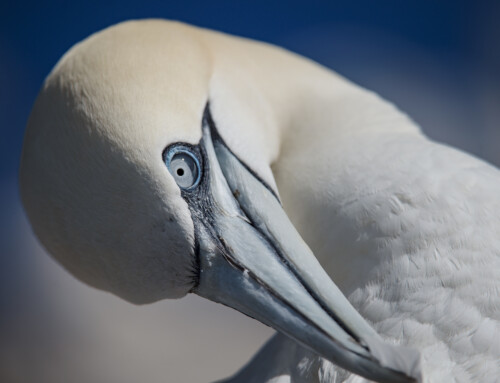Do habitat features that influence over-winter survival also influence reproductive success in a territorial, year-round resident?
LINKED PAPER
Adult survival and reproductive rate are linked to habitat preference in territorial, year-round resident Song Sparrows Melospiza melodia. Germain, R.R., Schuster, R., Tarwater, C.E., Hochachka, W.M. & Arcese, P. 2018. IBIS. DOI: https://doi.org/10.1111/ibi.12557. VIEW
An individual’s fitness can be strongly influenced by their ability to recognize and defend habitat features which may be beneficial. This has led to many studies investigating links between habitat and individual reproductive success (reviewed in Johnson 2007, Gaillard et al. 2010), but many fewer studies test for the effects of habitat on adult survival outside of the breeding season for populations that reside on the territories year-round. Because mortality rates for such populations are often highest outside of the breeding season (Arcese et al. 1992, Camphuysen et al. 1996, Coulson et al. 2001), and because habitat features which benefit survival during this ‘over-winter’ period may differ from those which benefit reproductive success, our understanding of how occupying certain habitat ultimately affects individual fitness and population growth remains largely one-sided.
Our previous work with a long-term study of resident Song Sparrows, Melospiza melodia, on Mandarte Island, British Columbia, Canada has shown that individuals prefer to occupy habitat that leads to higher reproductive success (Germain & Arcese 2014), through the contributions of habitat features to food availability and the energetic cost of breeding (Germain et al. 2015). Although spatial variation in adult over-winter survival exists (Hochachka et al. 1989), the specific effects of different habitat features on over-winter survival, and whether habitats that positively affect over-winter survival also affect reproductive success remained elusive.
In this study, we used 37 years of observations of individual survival, reproductive success, and habitat occupancy on Mandarte Island to first estimate the effect of habitat features on Song Sparrow over-winter survival over a range of winter weather conditions and population sizes, controlling statistically for individual sex and age. Our findings indicate that variation in adult over-winter survival was substantial, and better predicted by fine-scale features of an individual’s territory than by population size or winter weather. Specifically, over-winter survival tended to increase with total shrub cover, but decreased with the extent of intertidal coastline along an individual’s territory, suggesting that greater vegetative cover and lower exposure to direct wind and rain may benefit Song Sparrow survival through increased shelter, structural support, and food availability.
Over the 37-year study, expected adult survival and reproductive rate on each occupied 20x20m grid cell (‘site’) across the island (Fig. 1) were both related to long-term site preference, and sites with higher reproductive rates also tended to exhibit higher over-winter survival. Thus, we found no evidence for site-specific trade-offs between over-winter survival and reproduction, as Song Sparrows appear to prefer habitats that maximize their annual fitness on average.

Furthermore, while we show that adult survival was more influential on population growth (λ) than annual reproductive rate, the importance of reproductive rate to λ was much higher in preferred sites (Fig. 2). This is because reproductive variation among sites was greater than site-specific variation in survival. Our results therefore suggest that the influence of survival on λ is most pronounced for individuals occupying less preferred sites, which also produce fewer offspring and thus contribute less to population growth than individuals in preferred sites.

Altogether, our conclusions from this work indicate that while individual Song Sparrows don’t appear to experience seasonal trade-offs between different fitness components when occupying preferred habitat, they are predicted to incur substantial fitness costs for settling in less-preferred sites. This work highlights the importance of identifying and conserving habitat that maximises fitness throughout the annual cycle, as such efforts may be much more beneficial to population growth and hence conservation programs than those focused on habitat that benefit either survival or reproductive success alone.
References
Arcese, P., Smith, J.N.M., Hochachka, W.M., Rogers, C.M. & Ludwig, D. 1992. Stability, regulation, and the determination of abundance in an insular song sparrow population. Ecology 73: 805–822. VIEW
Camphuysen, C.J., Ens, B.J., Heg, D., Hulscher, J.B., van der Meer, J. & Smit, C.J. 1996. Oystercatcher Haematopus ostralegus winter mortality in The Netherlands: the effect of severe weather and food supply. Ardea 84a: 469–492.
Coulson, T., Catchpole, E.A., Albon, S.D., Morgan, B.J., Pemberton, J.M., Clutton-Brock T.H., Crawley, M.J. & Grenfell, B.T. 2001. Age, sex, density, winter weather, and population crashes in Soay sheep. Science 292: 1528–1531. VIEW
Gaillard, J.-M., Hebblewhite, M., Loison, A., Fuller, M., Powell, R., Basille, M. & Van Moorter, B. 2010. Habitat-performance relationships: finding the right metric at a given spatial scale. Philos. Trans. R. Soc. London B 365: 2255–2265. VIEW
Germain, R.R. & Arcese, P. 2014. Distinguishing individual quality from habitat preference and quality in a territorial passerine. Ecology 95: 436–445. VIEW
Germain, R.R., Schuster, R., Delmore, K.E. & Arcese, P. 2015. Habitat preference facilitates successful early breeding in an open-cup nesting songbird. Funct. Ecol. 29: 1522–1532. VIEW
Hochachka, W.M., Smith, J.N.M. & Arcese, P. 1989. Song sparrow. In: Newton, I. (ed), Lifetime Reproduction in Birds. Academic Press, London, pp. 135–152.
Johnson, M.D. 2007. Measuring habitat quality: a review. Condor 109: 489–504. VIEW
Image credit
Featured image: Song Sparrow, Melospiza melodia © Ryan Germain
Blog posts express the views of the individual author(s) and not those of the BOU.
If you want to write about your research in #theBOUblog, then please see here.





